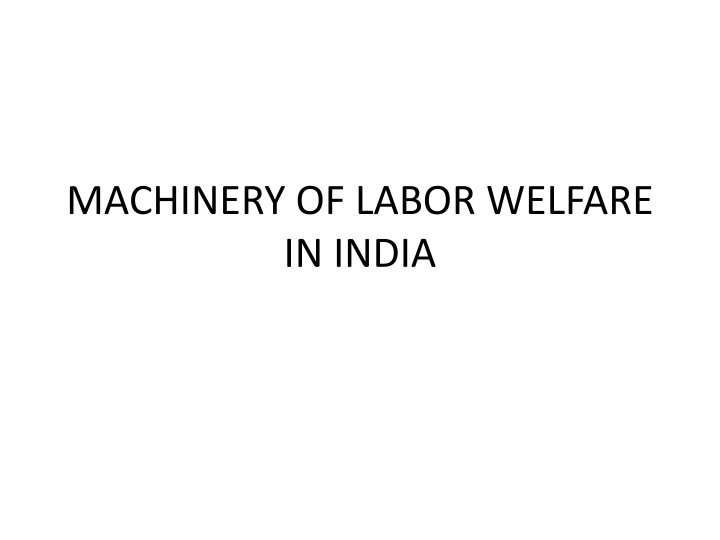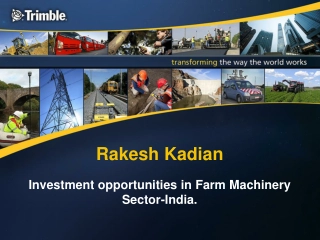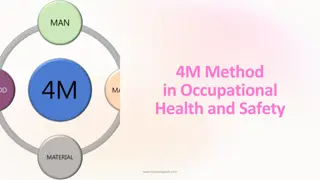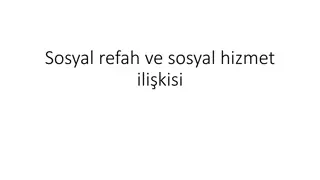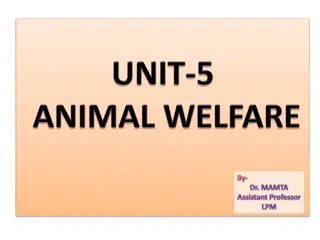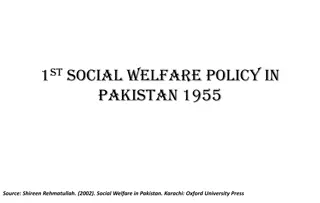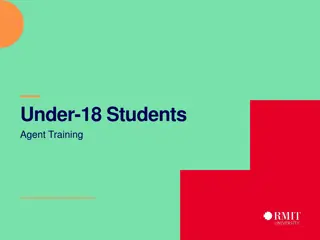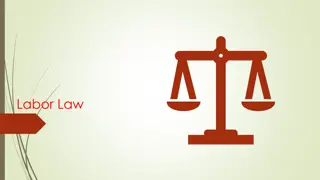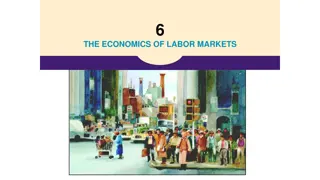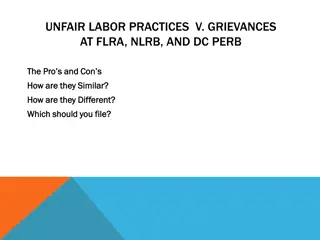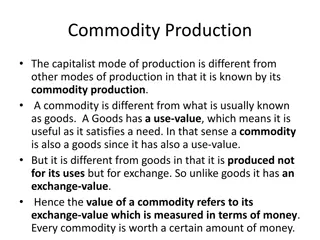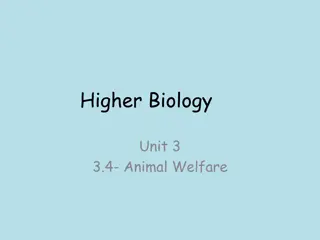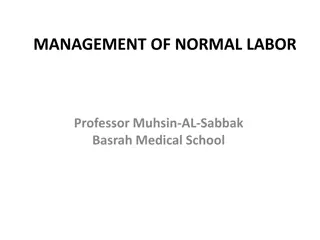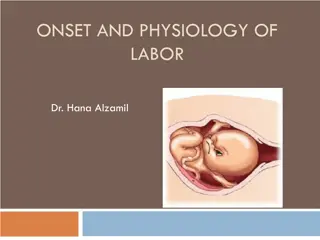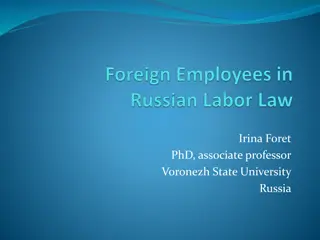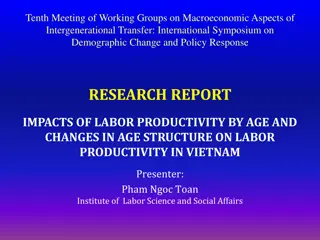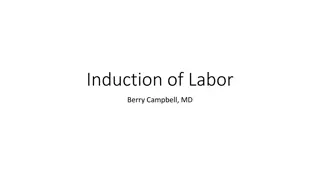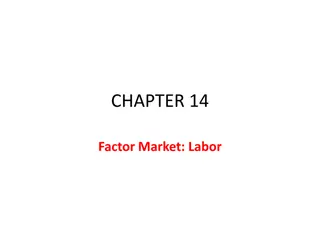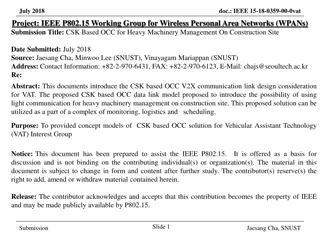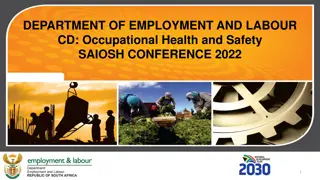Machinery of Labor Welfare in India
Social security plays a crucial role in supporting working class individuals during times of illness, accidents, and other hardships. The evolution of machinery for labor welfare in India has seen advancements since independence, with measures like the Fatal Accident Act and establishment of various labor commissions. Accidents, including industrial accidents, are categorized by their nature and length of recovery, with a focus on minimizing harm to workers and improving safety conditions.
Download Presentation

Please find below an Image/Link to download the presentation.
The content on the website is provided AS IS for your information and personal use only. It may not be sold, licensed, or shared on other websites without obtaining consent from the author.If you encounter any issues during the download, it is possible that the publisher has removed the file from their server.
You are allowed to download the files provided on this website for personal or commercial use, subject to the condition that they are used lawfully. All files are the property of their respective owners.
The content on the website is provided AS IS for your information and personal use only. It may not be sold, licensed, or shared on other websites without obtaining consent from the author.
E N D
Presentation Transcript
MACHINERY OF LABOR WELFARE IN INDIA
Social security is an important welfare measure for working class. It helps labors at the time of illness, accidents, invalidity and other hardship of life To run the social security and labor welfare schemes efficiently, Machinery is needed. Because without any effective administrative set up it is very hard to run these schemes.
Evolution of Machinery Before independence Britishers were not much concerned to improve the conditions of workers. But after independence Indian Government did it. Industrialization carries various problems The Fatal Accident Act 1885, The Merchant Shipping Act1859, The Factories Act 1888 & 1911, the Mines Act
Continued In 1920 Special Post of Labor Commissioner created in Madras and Bengal 1920 Central government set up Bureau to promote certain coordination between central and province 1921 Government of Bombay also followed to suit by setting up a Labors Commissioners office The Bureau abolished in 1923 1929 Royal commission on labor and its recommendations accepted by government.
Accidents An accident is an unplanned and uncontrolled event which causes or cause likely to an injury It is something which is unexpected, unpredicted or not desired An accident may cause as a result of some unsafe activity, act, working condition etc.
Industrial Accident An accident or occupational accident is an event of accident that suddenly occurs when one or more no. of employees placed in plant.
Types According to Length of Recovery According to Nature of Injury
Categories of Accidents Minor accidents- Reportable Fatal Due to dangerous occurance
Minor Less harmful Preventing worker from working for the period of less than 48 hours from time of accidents These accidents are not reported to top management Easily controlable
Little complicated Prevent more than 48 hours Supervisor responsible to report to the top management and arrange another worker so that the production could not e affect
Dangerous Occurs due to, Bursting of vessel for containing steam under pressure greater then atmospheric pressure Failure of crank or other appliances Explosion of fire causing damage Explosion of gas or liquid
Causes of Accidents Technical unsafe condition- Mechanical and environmental factors Human Unsafe acts-Personal Factors
ISO 14001 Is an Internationally accepted standard that sets out a framework of essential elements for putting an effective EMS in place The standard is designed to address the delicate balance between maintaining profitability and reducing environmental impact. With the commitment of entire company, it can enable to achieve both objectives
It is for, Single site to large MNCs High to Low risk service companies Manufacturing, process and the service industries including local government All industrial sectors including public and private sectors Original equipment manufacturers and their suppliers
ISO 14001 simply Plan- your approach Do- Undertake an action Check- it is working Act- taking corrective actions
EMS PLAN EMS ACT DO CHECK
EMS refers to the management of an organization s environmental programs in a comprehensive, systematic, planned and documented manner. It includes organizational structure, planning and resources for developing, implementing and maintaining policy for environmental protection.
More formally EMS is a system and database which integrates procedures and processes for training of personnel, monitoring, summarizing and reporting of specialized environmental performance information to internal and external stakeholders of a firm
Trade Unionism A Trade Union is a continuous association of wage earners for the purpose of maintaining or Improving the conditions of their lives. A TU means an association of workers in one or more professions an association carried on mainly for the purpose of protecting and advancing the members Economic interest in connection with their daily work
Philosophy Industrial Revolution 1760 in great Britain 1820-1840 Transition Period Hand production methods to machines, chemical, iron industries formed Textile dominating The Industrial Revolutions major impact was Standard of Living is increased consistently in the History First time GDP per Capita was broadly stable before IRev. Increase in capitalist economy Structural Change from Agriculture to Industry Mechanized textile Production
The majority of textile workers during Ind Rev were Unmarried women and Children including orphans and worked for 12-14 hrs Class Struggle The Trade Union Through its Leadership, bargains with the EMPLOYER on behalf of UNION members and negotiates labor contract (collective bargaining) with employers. The most common purpose of these associations or Unions is maintaining or improving the conditions of their employment
TYPES OF TU Reformist Aim at the preservation of the capitalist society and maintenance of the usual Employee-Employer Relationship, elimination of competitive system of production Revolutionary Aim at destroying present structure completely and replacing it with new and different institutions according to the ideas that are regarded as preferable
Based on Ideology Based on Agreement Based on Trade Revolutionary Movement Reformist Uplift (change in taxation, elimination of poverty) s Craft Unions General unions Blue or white collar Industrial Unions Closed shop Union shop Preferential shop Maintenance shop Agency shop Open shop
Objectives of TU Negotiation To To provide service to members Represent The Problem OBJECTIVES To raise voice against Decision
Service To Members 1. Education and training 2. Legal assistance 3. Financial Discount 4. Welfare benefits
Functions of TU MILITANT FRATERNAL ULTRAMURAL/EXTRAMURAL (Protective) (Positive)
MILITANT To Achieve higher wages and better working conditions To Raise the status of workers as a part of Industry To Protect Labors against victimization and injustice
FRATERNAL To take up welfare measures for improving morale of the workers To generate self confidence among workers To encourage sincerity and discipline among workers To provide opportunities for promotion and growth To protect women workers against discrimination
INTRAMURAL Intramural refers to welfare schemes and activities within the framework of factory premises ( safety, secure working environment, minimum wages, minimum working hours, and leave with wages) Extramural refers to the welfare schemes outside the factory premises( medical assistance, health care and education etc.)
ROLE OF TU Sectional Bargainer Interest of Labors at all levels plant, industry, national level) Class Bargainer Agents of state Partners in social control Unions role Business oriented Role Unions as Change agent (Adopting the model of Prof. Clark Kerr, union assumes above roles)
Problems of Trade Unions Uneven growth: Industry wise and area wise Financial weakness Multiplicity of Unions and Inter-Union Rivalry Leadership Issue Politicization of Unions Problem of Recognition of Trade Union
Trend and Challenges New Technology Changing Business Challenges Structure Occupational
Change in TU Attitudinal change Depoliticization Multiplicity
Impact of ILO At the end of World war I, a Peace Conference was convened which led to the creation of the ILO in 1919 As an original signatory to the Treaty of Peace, India became a member of an ILO in 1919 ILO one of the specialized agencies of UN 1920-1930 face problems due to economic crisis June 1944 conference at Philadelphia to consider programs and policies to be pursued after WAR II The purpose and aim of an ILO redefined in the form of Declaration- The Declaration Philadelphia
Declaration Is based on the following principles i) Labor is not commodity ii) Freedom of expression and of association are essential for sustained progress iii) Poverty anywhere constitutes a danger to prosperity everywhere iv) The war against want requires to be carried on with unrelenting vigor by each nation and continuous and concerted international effort in which representatives of workers and employers, enjoying equal status with those of governments, join a free discussion and democratic decisions with a view to promoting the welfare of common man.
Aims To remove the hardship and privations of the toiling masses all over the world and to ensure economic justice for them and To improve their living and working conditions as a vital step towards establishment of a universal and lasting peace based on social Justice
ILO Is tripartite body consisting of , Representatives of Government, Employers and workers of member countries in the ration of 2:1:1 International Institute of labor Studies was established in 1960 Centre for advanced studies in the Social and Labor field.
Principal Organs of ILO International Labor Conference Governing Body International Labor Office
Once a year conference Member country 4 delegates and 2 representing Government, 1 Employer and 1 worker To set up minimum international social and labor norms or standards ILC The Governing body is the chief executive body of the organization and meet four times in a year Tripartite in character 40 Members= 20 Government +10 Employer+10 employee GB Responsible for day to day activities 9 Branches including India Asian, African and American Advisory Committee Il offoce
ILO Divided Into 3 Parts 1 Legislative 2 Operational 3 General
THE MAHARSHTRA RECOGNITION of TRADE UNIONS of Prevention OF UNFAIR LABOR PRACTICES ACT 1971 The act deals with ULP on the part of trade unions and employers also. ULP are prohibited
Unfair Labor Practices on the part of Employers 1. To discharge or dismiss employees a) By way or victimization b) Not in good faith but in the colorable exercise to the employer s rights c) By falsely implicit an employee in a criminal case on false evidence or on concocted evidence d) For patently false reasons e) Untrue or trumped allegations of absence without leave f) In utter disregard of the principles of natural justice in the conduct of domestic inquiry or with undue haste g) For misconduct of a minor or technical character without having any regard to the nature or the past record of service so as to amount to a shockingly disproportionate punishment
2 . To abolish the work of a regular nature and to give work to contractors as a measure of a breaking a strike 3. To transfer an employee mollified from one place to another under the guise of following management policy 4. To insist upon individual employees who were on legal strike to sign a good conduct bond as a precondition to allowing them to resume work 5.To show favoritism or partiality to one set of workers regardless of merits 6.To employ employees as Badalis, casual or temporary and to continue them as such for years with the object of depriving them to the status and privileges of permanent employees
7. To discharge or discriminate against any employee for filing charges of testifying against an employer in any inquiry or proceedings relating to any industrial disputes 8. To recruit employees during a strike which is not an illegal strike 9. Failure to implement award, settlement or agreement 10. To indulge in Act of force of violence
